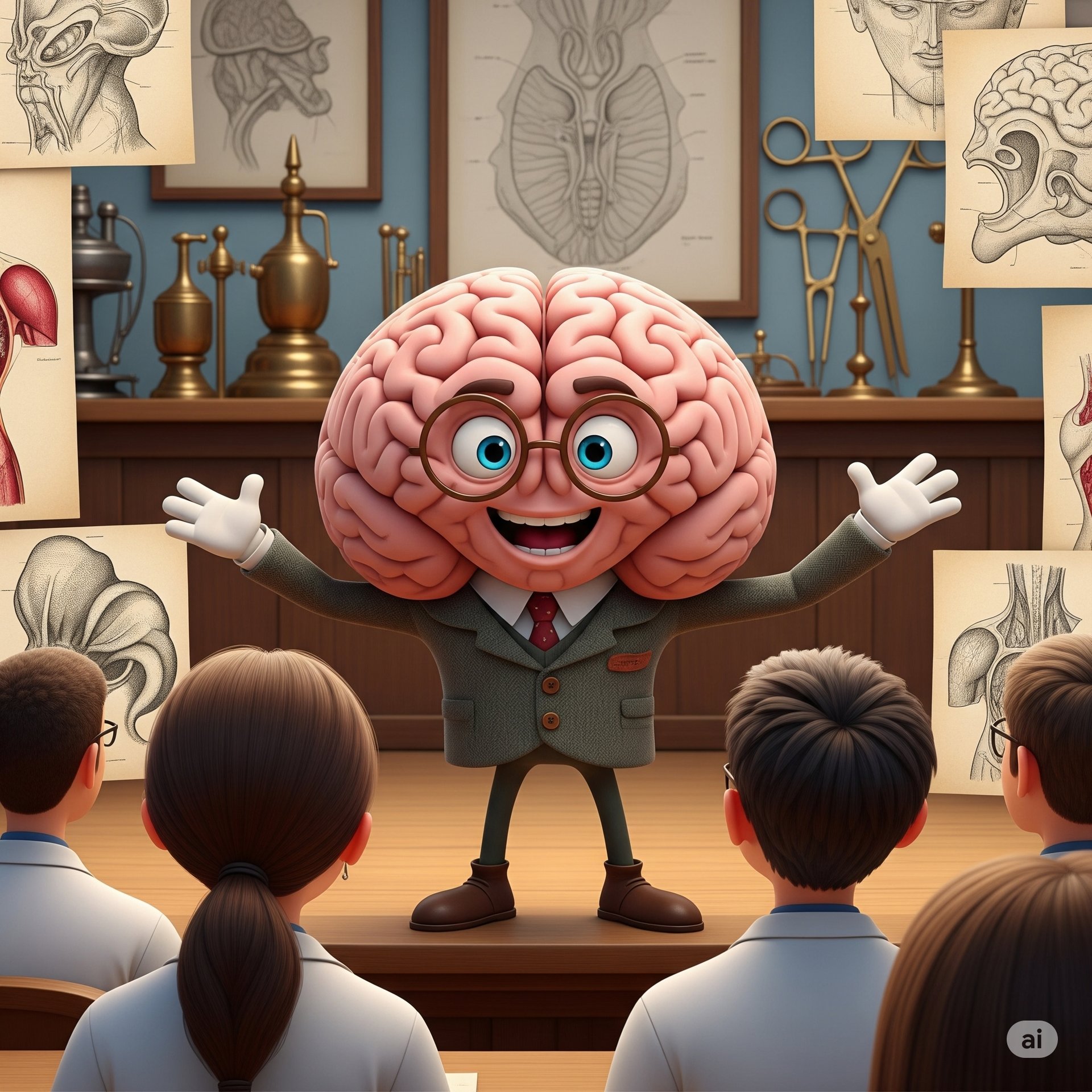THEMEDPRACTICALEXAM.COM

History Taking Protocol for Ataxia
1. Patient Details
Name, Age, Sex, Occupation, Address
2. Presenting Complaint
Unsteadiness, clumsiness, or difficulty with walking, balance, or coordination
Duration and progression
3. History of Presenting Illness
Onset:
Sudden, subacute, or gradual?
Exact time and circumstances (e.g., after infection, trauma, medication, or spontaneously)
Progression:
Static, episodic, or progressive?
Rate of worsening (hours, days, weeks, years)
Symmetry:
Is the ataxia symmetrical or more marked on one side?
Distribution:
Gait ataxia (walking), truncal ataxia (sitting/standing), limb ataxia (arms/hands), speech (dysarthria)
Associated symptoms:
Headache, vomiting, altered consciousness (suggests raised intracranial pressure or acute process)
Visual disturbances (diplopia, blurred vision, nystagmus)
Hearing loss or tinnitus
Sensory symptoms (numbness, tingling, proprioceptive loss)
Weakness, spasticity, or involuntary movements (tremor, chorea, dystonia)
Seizures
Symptoms of infection (fever, malaise)
Bladder or bowel dysfunction
Cognitive or behavioral changes
Precipitating/relieving factors:
Alcohol, medications, toxins, recent illness, physical activity
Functional impact:
Difficulty with daily activities (buttoning clothes, feeding, writing, using utensils, getting to bathroom at night)
Falls or injuries due to imbalance
4. Past Medical History
Previous neurological illnesses (stroke, multiple sclerosis, head injury, tumors)
Recent infections (especially viral)
Autoimmune or metabolic disorders
Exposure to toxins (alcohol, drugs, heavy metals)
Vitamin deficiencies (e.g., B12, E)
5. Drug History
Current and recent medications (antiepileptics, sedatives, antihistamines, chemotherapy, alcohol)
Recent changes in medication
Over-the-counter and herbal remedies
6. Family History
Similar symptoms in family members (suggests hereditary ataxia)
Age of onset and progression in relatives
Consanguinity
7. Personal and Social History
Alcohol use, substance abuse
Occupational exposures (toxins, chemicals)
Diet and nutritional status
Recent travel (risk for infections)
8. Systemic Enquiry
Symptoms of other systems:
Cardiac (palpitations, syncope)
Endocrine (diabetes, thyroid)
Gastrointestinal (malabsorption, diarrhea)
Constitutional symptoms (fever, weight loss, night sweats)

Here is a detailed case history for ataxia with a focus on cerebellar ataxia and vitamin B12 deficiency, followed by a summary and differential diagnosis (without examination findings):
Case History
Personal Details:
Mrs. Sunita Sharma, 44-year-old female, school teacher
Presenting Complaint:
Progressive unsteadiness while walking for 4 months
History of Presenting Illness:
Mrs. Sharma was apparently well 4 months ago when she began to notice unsteadiness while walking, described as veering to either side and difficulty maintaining balance, especially in dim light or on uneven surfaces. Over time, her gait has become increasingly wide-based and uncoordinated. She has also developed clumsiness in her hands, leading to difficulty with tasks such as buttoning clothes and writing.
She reports occasional slurring of speech and mild tremulousness of her hands when reaching for objects. There is no history of vertigo, double vision, hearing loss, or facial weakness. She denies any recent fever, headache, vomiting, or loss of consciousness.
Mrs. Sharma also describes numbness and tingling in her feet and lower legs for the past 3 months, with a sensation of “walking on cotton.” She has noticed difficulty feeling the ground beneath her feet and sometimes stumbles, especially when walking in the dark. She reports mild urinary urgency but no incontinence.
There is no history of alcohol use, toxin exposure, or recent medication changes. She follows a strict vegetarian diet for the past 20 years and admits to poor appetite and recent weight loss. There is no family history of similar illness, ataxia, or neurological disorders.
She has not had any recent infections, trauma, or vaccinations. No prior neurological illnesses.
Past Medical History:
No diabetes, hypertension, or thyroid disorders
No previous neurological or autoimmune illnesses
Drug History:
No regular medications
No recent antibiotics, chemotherapeutic agents, or antiepileptics
Family History:
No family history of ataxia, neuropathy, or hereditary disorders
Personal and Social History:
Strict vegetarian, low dairy intake
Non-smoker, non-alcoholic
Middle socioeconomic status
Systemic Enquiry:
No fever, night sweats, or cough
No joint pain or skin rash
No visual or hearing disturbances
Case Summary
A 44-year-old vegetarian woman presents with progressive gait unsteadiness, limb incoordination, slurred speech, distal sensory symptoms, and mild urinary urgency over 4 months. There is no history of alcohol use, infection, or family history of ataxia.
Differential Diagnosis
Subacute Combined Degeneration due to Vitamin B12 Deficiency
Supported by strict vegetarian diet, sensory ataxia, distal paresthesias, and mild bladder symptoms.
Primary Cerebellar Ataxia (Degenerative or Acquired)
Paraneoplastic Cerebellar Degeneration
Consider if there is unexplained weight loss or risk factors for malignancy.
Acquired Toxic or Drug-induced Ataxia
Multiple Sclerosis
Possible if there are relapsing-remitting symptoms, but less likely with this age and progression.
Hereditary Ataxia (e.g., Spinocerebellar Ataxia, Friedreich’s Ataxia)

1. What is ataxia?
Ataxia is a clinical syndrome characterized by impaired coordination of voluntary muscle movements, resulting in unsteady gait, clumsiness, and difficulty with fine motor tasks137.
2. What are the main types of ataxia?
Cerebellar ataxia (due to cerebellar dysfunction)
Sensory ataxia (due to impaired proprioceptive input, such as from peripheral neuropathy or posterior column disease)
Vestibular ataxia (due to vestibular system dysfunction)1.
3. What are common causes of cerebellar ataxia?
Stroke or hemorrhage in the cerebellum
Tumors
Infections (e.g., viral cerebellitis)
Toxins (alcohol, certain drugs)
4. How does vitamin B12 deficiency cause ataxia?
Vitamin B12 deficiency leads to degeneration of the posterior columns and corticospinal tracts in the spinal cord, resulting in sensory ataxia due to loss of proprioception, often accompanied by paresthesias and weakness7.
5. What are the key clinical features of cerebellar ataxia?
Gait instability (wide-based, unsteady gait)
Limb incoordination (dysmetria, intention tremor)
Dysarthria (slurred speech)
Nystagmus (abnormal eye movements)
Truncal ataxia (difficulty sitting or standing without support)357.
6. How does sensory ataxia differ from cerebellar ataxia?
Sensory ataxia is due to loss of proprioceptive input and worsens when the eyes are closed (positive Romberg sign), while cerebellar ataxia is present regardless of visual input and is often associated with dysarthria and nystagmus13.
7. What investigations would you order in a patient with ataxia?
MRI brain and spinal cord (to assess cerebellum and posterior columns)23
Serum vitamin B12 and other metabolic panels
Genetic testing for hereditary ataxias
Nerve conduction studies if peripheral neuropathy is suspected23.
8. What is spinocerebellar ataxia?
Spinocerebellar ataxia is a group of hereditary, progressive neurodegenerative disorders characterized by cerebellar dysfunction, leading to ataxia, dysarthria, and sometimes cognitive impairment236.
9. How is cerebellar ataxia managed?
Management is symptomatic and supportive: physical therapy, occupational therapy, speech therapy, and treatment of underlying causes (e.g., stopping offending drugs, vitamin supplementation)356.
10. What is the importance of family history in ataxia?
A positive family history suggests a hereditary form of ataxia, such as spinocerebellar ataxia or Friedreich’s ataxia26.
11. What are the distinguishing features of truncal versus appendicular ataxia?
Truncal ataxia: unsteady sitting or standing, caused by midline (vermis) cerebellar lesions
Appendicular ataxia: limb incoordination, caused by cerebellar hemisphere lesions17.
12. What is the Romberg test and what does it indicate in ataxia?
The Romberg test assesses proprioception. A positive test (worsening unsteadiness with eyes closed) suggests sensory ataxia, not cerebellar ataxia1.
13. Can ataxia be acute in onset? Name some causes.
Yes. Acute ataxia can result from cerebellar stroke, hemorrhage, infections, or toxins13.
14. What are some reversible causes of ataxia?
15. What eye movement abnormalities are seen in cerebellar ataxia?
Nystagmus and saccadic dysmetria (inaccurate rapid eye movements) are common35.
16. What is dysmetria?
Dysmetria is the inability to judge the distance or range of a movement, resulting in overshooting or undershooting a target, commonly seen in cerebellar ataxia35.
17. What are the roles of physical and occupational therapy in ataxia?
They help improve balance, coordination, and independence in daily activities, and reduce the risk of falls356.
18. What is the significance of early diagnosis in ataxia?
Early diagnosis allows for timely management of reversible causes and genetic counseling for hereditary forms26.
19. What is the typical gait seen in cerebellar ataxia?
A broad-based, unsteady, and staggering gait, often described as “drunken” gait357.
20. Name some drugs that can cause ataxia as a side effect.
Antiepileptics (phenytoin), benzodiazepines, lithium, and some chemotherapeutic agents35